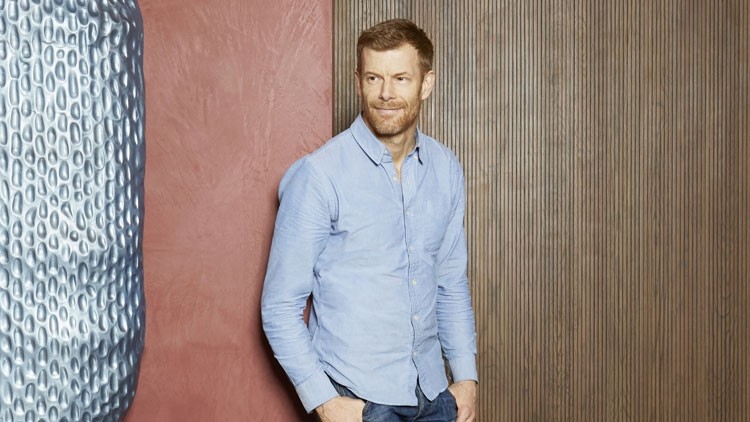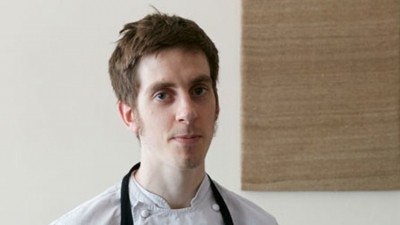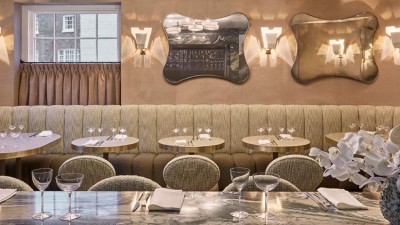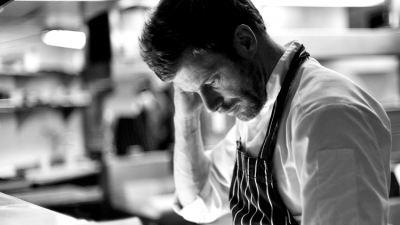Tom Aikens: "The calibre of restaurants in London is so high, trying to stand out is tough"

So Muse. That seemed to come out of nowhere...
Ever since I closed Tom Aikens [his Chelsea restaurant, in 2014] I’ve been looking for a new place. I must have looked at 60 or 70 sites over the years but finding the right location, rent, environment, space and size is very hard – the ultimate site just doesn’t exist. Because I wanted to do something much smaller I thought it would be easier but it definitely wasn’t. I wanted a space that was only 1,500sq ft and generally most spaces that size had 1,200sq ft in the basement and 300sq ft on the ground floor and eating in a basement was not going to work. I also wanted to find something in a location suitable for the clientele we want to come through the doors, and Belgravia fits this.
Is it different from what you’ve done before?
The calibre of restaurants in London is now so bloody high, trying to stand out and do something special and different is tough, so I racked my brains as to what we can give people to make them remember us. That is the key for people returning to a restaurant, will they remember something when they leave it? So, we’re hitting them all the way through the meal with a dining experience they will remember, that’s what we’re trying to do in terms of the journey of Muse. It’s probably also why you may have seen the newspaper headline ‘Is this the most pretentious restaurant in the UK?’
Ah yes, the Daily Mail article referring to Muse’s colourful dish descriptions...
Yes. You don’t mean to do something, but it just happens. The whole idea of that was, first and foremost, when you normally go to a restaurant you open a menu, there’s your starters, mains and desserts and it’s yawn, yawn, yawn – it’s not inspirational or thought-provoking. My idea was for people to be intrigued when they read the menu by telling them a story. When a diner gets the menu, the mews house Muse is located in pops out with information on the first four courses. After that, it’s taken away and they get another menu with the remainder of what’s going to happen. We weren’t saying what the dish was, describing any cooking element or even giving any clue as to how it was prepared or cooked but instead telling a story of how the dish is thought through and where it has come from. We are trying to make the menu more fun and charming.
But you’ve since changed the descriptions
We’ve now included the three main ingredients of each dish for the purpose of dietaries, but they still have the same descriptions.
Tell us about the food
The dishes are based on memories from throughout my life. One is called Conquering the Beech Tree, which is based on me as a child trying to climb the tall beech tree at the bottom of my garden. I challenged myself to reach the top and achieved it. As a chef there are similarities, you also have a fear to conquer when you prepare a new dish – will it be right, will the customers like it? Conquering a beech tree as a child and a dish as a chef are very similar.
But that doesn’t explain what the dish is...
It’s a grilled langoustine that’s served on some lardo di colonnata with pig’s trotter jus. Just to the right of it is a little raviolo of burnt apple purée and apple consommé flavoured with rosemary and the juice of Pink Lady and Granny Smith apples. The Pink Lady adds sweetness and the Granny Smith acidity. On top of that is some vanilla and jasmine oil. You’ve got the sweet and sharp to go with the fattiness of the pork. The langoustine is skewered with a beech twig. It’s a bit of a wacky dish but it works.
The decor is a touch wacky too
It’s designed to be fun and funky. In terms of the design I wanted to get across the feeling you were entering someone’s home so it feels that much more personal and special. It’s a bit out there – it pricks your eyes up, that’s for sure. It’s set over two separate floors and we’re very lucky to have two kitchens in a 950sq ft building, which is a bit ridiculous really. I didn’t want anyone to have an inferior seat, so we have an open kitchen on each floor. The downstairs one is for pastry and larder and snacks and the chefs will also do the drinks and cocktails there – they have just as good palates as bartenders – while upstairs is the hot kitchen, which has a Charvet stove and a bespoke charcoal grill.
And it’s only 25 covers…
On the ground floor there’s a small cocktail lounge and five counter seats and upstairs there’s six seats on the counter and 14 covers on tables. I’ve never done a 25-cover restaurant before and even though it’s small there’s still a lot of work to do with fewer chefs [seven in total, four in the top kitchen, three in the bottom]. Its size does give us the advantage of allowing us to make something truly special and memorable in the way we can control the food and service. If you’re doing 50 or 60 covers, you’ve got a totally different product.
This interview first appeared in the February 2020 issue of Restaurant magazine, the leading title for the UK's restaurant industry. For more features, comment, interviews and in-depth analysis of the restaurant sector, subscribe to Restaurant magazine here.
















